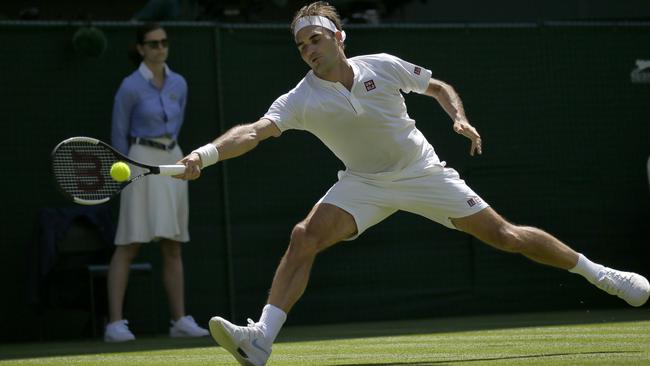Howard Head revolutionised sport with ski, tennis racquet redesigns
Aircraft engineer Howard Head helped transform sport when he decided to improve on skis and, later, tennis racquets.

One of my tennis heroes is not a player or even a coach but an eccentric engineer born in Pennsylvania in 1914. Howard Head did not hit a ball until he took early retirement in the 1970s, and his life contains lessons that extend way beyond sport.
A seminal paper by economists Ian Fillmore and Jonathan D. Hall reveals a story that articulates powerful truths about creative disruption. Let us start, however, with skiing because Head was an aircraft engineer in Baltimore in the late 40s when he first hit the slopes. He was not very good, partly because he had never done it before and partly because he was using wooden skis. Head’s curiosity was piqued. Could you not obtain a lighter, more flexible ski using materials familiar in aviation? This question became a passion. His first version was made of aluminium, plywood sides and honeycomb plastic. When he gave it to a ski instructor to test, it broke. Head tweaked the design. It broke again.
With each failure, Head was learning more about tensile strength and materials.
“The idea for an invention is only 5 per cent of the job,” he later would say. “Making it practical is 95 per cent.” By the 40th prototype, Head had a working design.
According to a wonderful feature in Sports Illustrated in 1980, it was “stronger, livelier and, most important, three times more resistant to twisting than the average wooden ski. That last quality, the torsional rigidity of Head skis, allowed them to carve through turns with a fraction of the effort required by wooden models.”

Head’s design made him a fortune and, after selling his business, he retired to suburban Baltimore. His free time was taken up with “chess, bridge, poetry, Plato’s Dialogues and the Brandenburg Concertos,” Sports Illustrated reported, until he built a tennis court in the back garden. Head then turned a second sport, if you will forgive the expression, on its head.
He was not satisfied with the wooden frame of his racquet. The sweet spot was too small. Head realised that a player such as him, who had come to the game later in life, needed a bigger sweet spot. He came up with a larger frame.
His answer was telling: the status quo “is so fixed in people’s minds that it just never occurred to anyone that bigger might be better”. He made the face 5cm wider. He added 7.5cm to the throat. He changed the material from wood to aluminium, then graphite. He tested and iterated the design, just as with his ski. His invention became an instant hit in 1976. Sports Illustrated described it as “the first radical change in racket design in a century … At a time when sales of other rackets have been dying like so many drop shots.”
But although Head made another fortune, his new racquet had consequences that not even he could have anticipated. One of the inspirations for the design was to increase the size of the sweet spot, giving older players a better chance of timing the ball. Most believed the new frame would help older professionals too. The opposite happened.
In the mid-70s, nearly 20 per cent of matches on the professional tour featured players over 30. By 1990, that number had plummeted to just 5 per cent. This decline was mirrored by an increase in the number of young professionals. Between 1970 and 1990, the percentage of matches involving players under 21 more than doubled, to 30 per cent.
Head’s racquet did not just increase the size of the sweet spot, it also boosted spin. Far from suiting older players, this aided younger players who could adapt more flexibly to the new reality and had the physicality to take advantage of it. They altered their stances and swings and rotated their grips. A technology designed to help older players nearly obliterated their presence from the tour.
The consequences of Head’s innovation continued to ripple beyond the 90s. As physicality became more important, so too did sports science. The influx of dietitians, physios and strength-and-conditioning experts was partly due to increased professionalism, but also the increased pay-off to stamina and power. This had a rebound effect on players who learned the game during the “Head” era but were now reaching veteran status.
They adapted their games and bodies and found new ways to extend their careers. In the 90s the decline in the proportion of matches involving players older than 30 halted and then reversed. By 2015, over-30s were playing in as high a percentage of matches as at any point in the past.
The top two men’s seeds at Wimbledon this year are Roger Federer, 36, and Rafael Nadal, 32.
I find this story revelatory and beautiful because it not only articulates the power of trial and error and the scope of human creativity, but the fundamental truth that innovation is inherently unpredictable and uncontrollable.
As for Head, he returned to retirement, finding solace in the sweet “ping” created by his racquet. He died in 1991, a great of 20th-century sport.
The Times



To join the conversation, please log in. Don't have an account? Register
Join the conversation, you are commenting as Logout